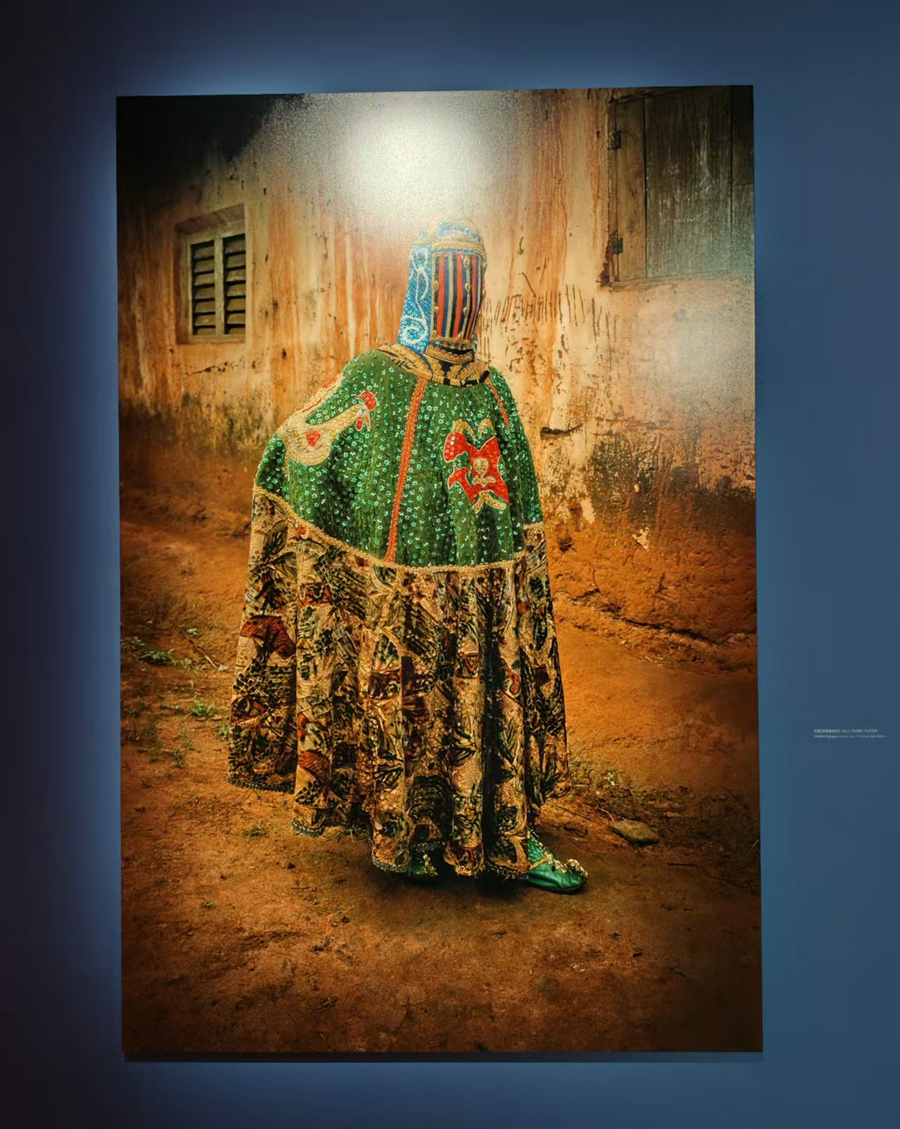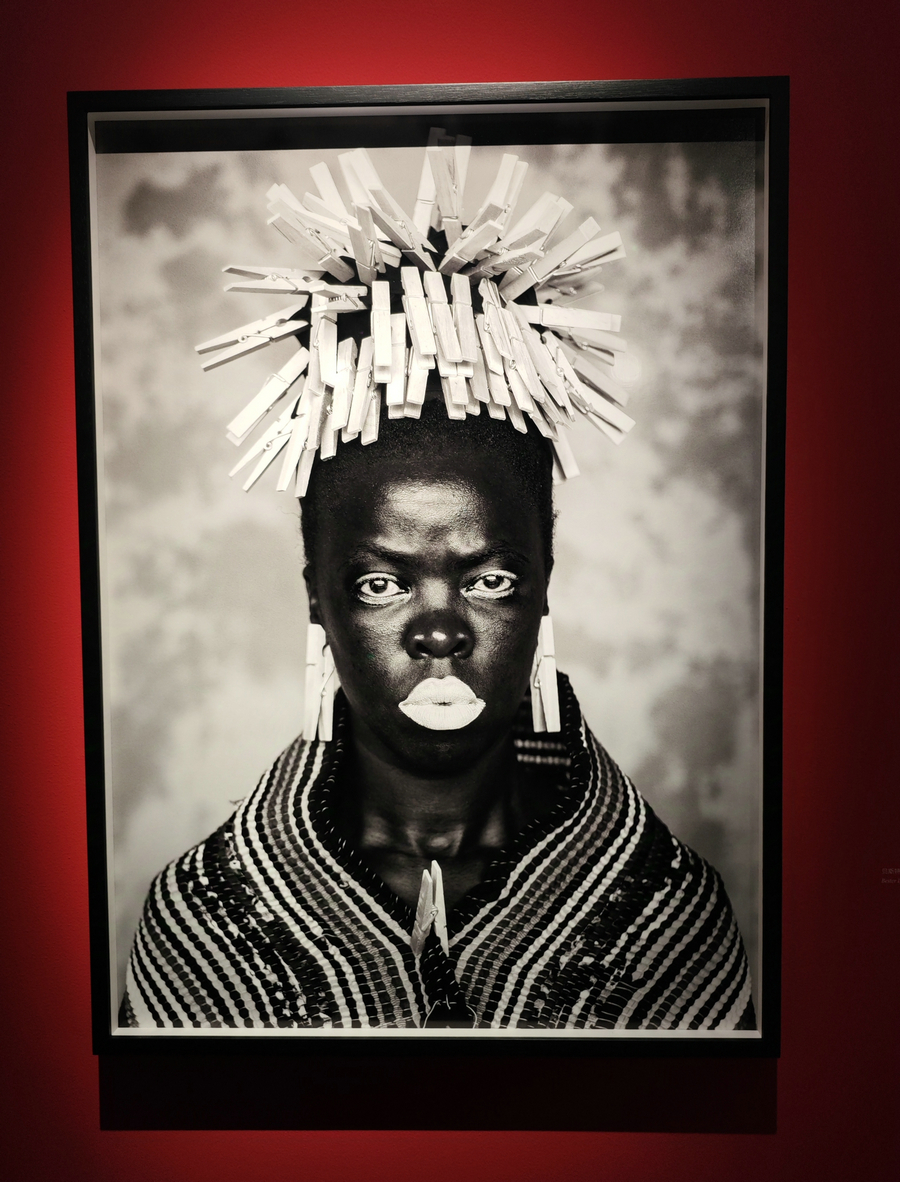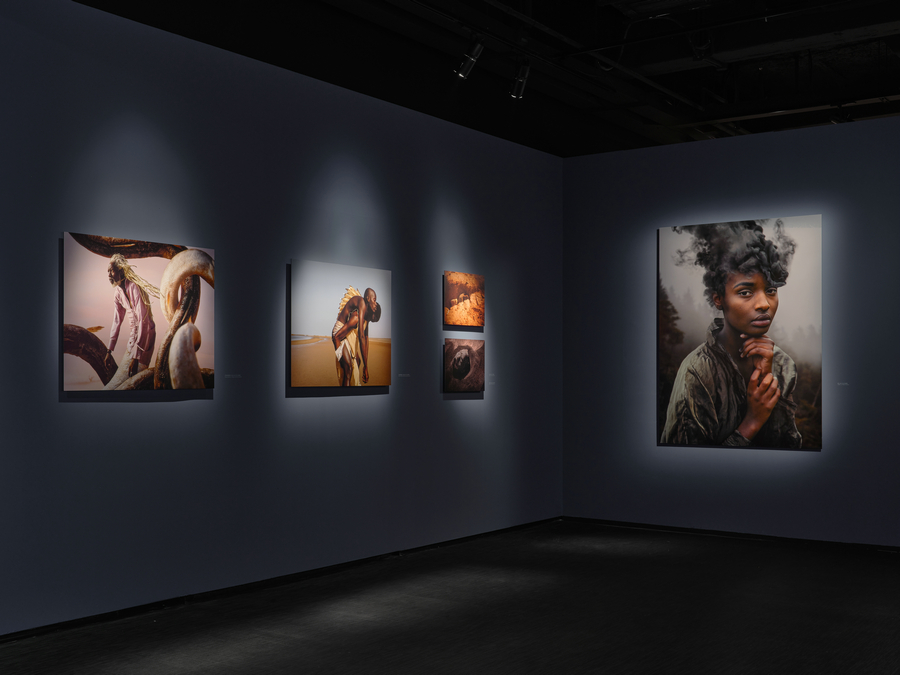Staging Africa through its own lens in Shanghai

When it comes to photography associated with Africa, what springs to mind, for most Chinese, are probably the images of acutely malnourished children, boatloads of refugees or vast wilderness full of exotic animals, prevalent images about the continent that have helped to stereotype it as impoverished and primitive.
Hence, visiting Marvelous Realism, the first and most extensive exhibition of contemporary African photography in Asia to date at Fotografiska in Shanghai, can be an eye-opening experience filled with marvel and somewhat disbelief.
"These are stunning. I've never been to Africa, but from the news I've read, I've learned that this is not Africa. I feel that there is a veneer of Hollywood glamour. What's your choice for not selecting artists working with more raw, real images?" a reporter challenged the show's curator, Ekow Eshun, a Ghanaian-British writer and curator, after a guided press tour on Aug 29.

Eshun, 56, is the author of the photography book Africa State of Mind, a continent-wide survey of contemporary African photography. In 2022, he curated In the Black Fantastic at the Hayward Gallery in London, a landmark exhibition of visionary black artists exploring myth, science fiction, and Afrofuturism.
Eshun argued that historically, the prevailing images of Africa tend to be news imagery that focuses on conflict, famine, and crisis. "That's one take on Africa, and all that is true. The exhibition is not to deny the crisis but to say that it is not and cannot be the entire story of the continent. Here, we present 16 photographers who offer 16 takes on Africa set within the spectrum of Marvelous Realism."
The exhibition's title, Marvelous Realism, was inspired by Nigerian scholar Kole Omotoso, who coined the term. It refers to a unique perspective on reality in African literature and art where the boundaries between the ordinary and the extraordinary can blur, and the mundane is infused with elements of wonder and the unusual.

Arguing that the goal of the group exhibition is not to offer a single, definitive take on Africa but to highlight some individual voices and perspectives, Eshun structured it in three sections – myth, movement, and memory, inviting visitors to look through the lens of African photographers to see other worlds, possibilities, and imaginings.
First, the Myth section greets the audience and presents works inspired by African mythology, folklore, and spirituality.

In Beninese photographer Leonce Raphael Agbodjelou's Egungun series (2011), figures stand against mud brick walls, adorned with intricate masks, and exquisite, multi-colored ceremonial costumes from head to toe. This series depicts incarnations of the Yoruba tribe's ancestors appearing at funerals and in annual ritualized parades, bridging the temporal gap between the living and the dead, a significant element in Yoruba spirituality and community life.

As mysterious as Agbodjelou's portrayal of the unique Yoruba tradition, Italian-Senegalese Maïmouna Guerresi's The Girls in Their Private Garden (2016) capture elegant, elongated black female Muslims levitating in a dream-like space as though they were in a moment of transforming or reaching spirituality, spotlighting the strength, royalty, and beauty of African Muslim women.

The exhibition's second section, Movement, gathers works portraying the African migration within and beyond the continent and depicting the psychological change that contemporary African artists have been working to bring about.
For example, in Somnyama Ngonyama, a self-portraiture series that South African photographer Zanele Muholi has been working on since 2012, the artist is both the participant and image-maker. She transforms herself into various stereotypical images of black women such as a domestic worker, looking at the viewer with confidence and defiance. By turning the camera on herself and exaggerating the darkness of her skin tone in post-production, the artist reclaims her blackness and insists on being seen through her own perspective.

Justin Dingwall, another South African artist, portrays albinism (a genetic condition resulting in the production of little-to-no melanin in the skin, hair, and eyes) as a symbol of beauty rather than a disability, in his Albus series (2016), which features albino models. His aesthetically striking creations compel the viewer to explore their thoughts about albinism and the long-standing bias against people with it.

Justin Dingwall, another South African artist, portrays albinism (a genetic condition resulting in the production of little-to-no melanin in the skin, hair, and eyes) as a symbol of beauty rather than a disability, in his Albus series (2016), which features albino models. His aesthetically striking creations compel the viewer to explore their thoughts about albinism and the long-standing bias against people with it.

Another fascinating piece in this section is Passage (2017), a three-channel video installation by South African visual artist Mohau Modisakeng, presented at South Africa's pavilion at the 2017 Venice Biennale. In the projections, three characters travel separately in white wooden row boats that slowly fill with water and eventually sink, submerging the passengers in the dark depths. The work references the dark history of the slave trade and the forced transportation of African people across the Atlantic Ocean. The piece is also hailed as especially relevant to today's refugee crisis.

Frank Chen, a veteran photographer based in Shanghai, said the exhibition moved him, allowing him to see beyond his previous impression of Africa. He admitted that Africa in his mind had long been dominated by the striking black-and-white images captured through the humanitarian lens of celebrated Brazilian photojournalist Sebastiao Salgado (1944-), who for decades documented Africa's unblemished landscapes, wildlife, and marginalized people, which often invoke awe and pity in the viewer.
"It's so meaningful to have such a huge showcase of contemporary African photography in Shanghai. I think this can offer Chinese audiences another perspective to look at Africa and rid us of stereotypes about Africa as a continent plagued by poverty and war," Chen said.

The show, co-presented by Fotografiska and the London-based KT Wong Foundation, was founded on an awareness of how the rich, diverse contemporary art and cultural scenes in Africa have yet to be discovered to the Chinese public.
"Over the years, I have seen the huge development and progress Africa has gone through, with the help obviously of China. But I have noted that there is still not that much understanding about China's culture in Africa, and vice versa," said Lady Linda Wong Davies, founder, and chair of the KT Wong Foundation, who has had a home in Africa for 30 years.
Hence, Davies, a philanthropist and art patron of Chinese descent, decided to initiate and create an exhibition of African photography in China, which she sees as "the easiest and fastest way" to show the Chinese audience what contemporary Africa, beyond animals and starving children, really is.

Before Marvelous Realism, Davies, committed to fostering bridges between China and the wider world through her foundation since its inception in 2007, introduced a work by Chinese videographer Yang Yongliang to the National Gallery of South Africa to increase the awareness of Chinese culture among South African audiences.
In October, the KT Foundation will bring Porgy and Bess, an English language opera performed by artists of the Cape Town Opera, to the 27th Beijing Music Festival.
Marvelous Realism runs through Dec 1.
If you want to go:
10:30 am-11 pm, Tuesday to Sunday, Fotografiska, No. 127 Guangfu Road, Jing'an district, Shanghai